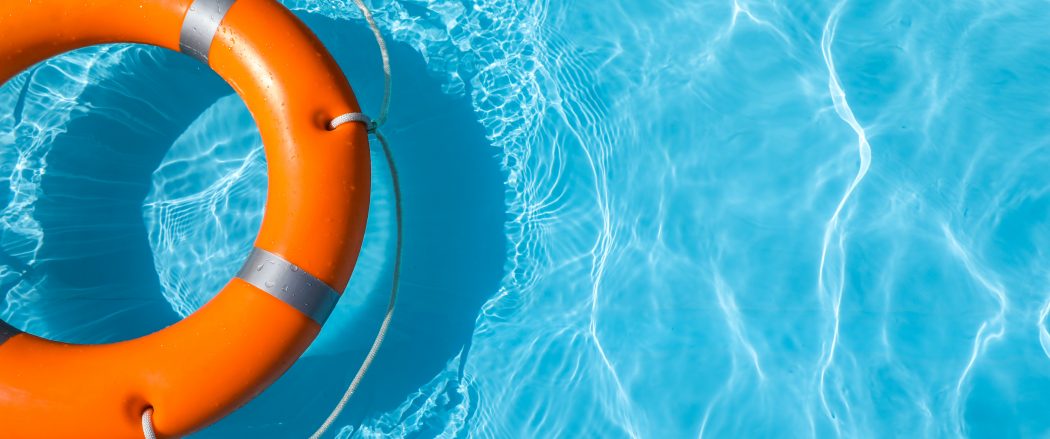To nurture the skills of resilience is key to providing young people with the ability to cope with stress, adversity, failure and challenges. Resilience is evident when young people have a greater ability to “bounce back” when faced with difficulties and achieve positive outcomes.
Resilience empowers individuals to recognise that following water safety rules can prevent accidents and potential deaths. It allows them to be aware and share good practices with their peers, families and other members of the community.
Water Safety is part of the national curriculum for England, so local authority-maintained schools must provide swimming and water safety lessons as part of their school programme.
Other types of schools, like academies and free schools, must provide a broad and balanced education – and that should include learning how to swim and teaching water safety.
People drown because they have little or no awareness of the dangers of water, misjudge their own swimming ability or unintentionally fall in. Drowning is the third most common cause of accidental death in children, so it is vital that every child has the opportunity to learn survival and self-rescue skills.
Like swimming, water safety knowledge and the skills to survive and self-rescue don’t come instinctively; they have to be taught. Pupils should be taught about the dangers they may encounter around water in their home such as paddling pools and ponds, the swimming pool and at outdoor water locations. Pupils should be able to assess and apply the principles of water safety in these different water environments. They should also understand that swimming in open water is very different to swimming in heated pools and that even strong swimmers can get into difficulties when swimming in water that is cold, unpredictable and deep.
By the end of primary school students should
It is required as part of the PE National Curriclum that pupils can
- Perform safe self-rescue in different water based situations
- Swim competently, confidently and proficiently over a distance of at least 25 metres
- Use a range of strokes effectively, for example, front crawl, backstroke and breaststroke.
Source: Physical Education DfE
By the end of secondary school pupils should know
Water safety messages should continue to be given to young people and they should have regular opportunities to extend their water safety knowledge. This includes practical experience of swimming and using self-rescue skills in outdoor swimming environments, such as the sea, rivers and other safe inland water venues.
The current national curriculum for PE for Key Stages 3 and 4 provides opportunities for this to happen. In particular, through the requirement for young people to take part in a broad range of physical activities including outdoor and adventurous activity challenges. Other subjects like geography and PSHE, should support water safety messages and extend young people’s understanding of the dangers of different water environments.
As part of a comprehensive, spiral PSHE programme schools may also teach pupils:
- To consider the benefits of indoor and open water swimming and develop skills for keeping safer.
- To consider implications of growing independence whilst near water
- To consider the effect of peer influence and other pressures on risk taking and risk management skills
This learning should not end at Key Stage 2. Water safety messages should continue to be given to young people and they should have regular opportunities to extend their water safety knowledge. This includes practical experience of swimming and using self-rescue skills in outdoor swimming environments, such as the sea, rivers and other safe inland water venues.
The current national curriculum for PE for Key Stages 3 and 4 provides opportunities for this to happen. In particular, through the requirement for young people to take part in a broad range of physical activities including outdoor and adventurous activity challenges. Other subjects like geography and PSHE, should support water safety messages and extend young people’s understanding of the dangers of different water environments.
Source – Swim England

Visit Water Safety, Learn Together Cambridgeshire for further information, links and resources
Local Support

Cambridgeshire Fire and Rescue Service
Teaching fire safety in schools The Fire and Rescue Service provide free fire safety education to children in primary and secondary schools within Cambridgeshire and Peterborough. Our fire crews, community fire safety officers and community champions carry out interactive educational workshops in schools and at fire stations, reaching out to thousands of Key Stage 1,
Read More About Cambridgeshire Fire and Rescue ServiceResources
Documents
Key Stage 1
Key Stage 2
Teacher Guidance
Other
External Links
- Advice to Enjoy Being In, On and Around Water Safely – RLSS UK
- Cambridgeshire fire and rescue water safety
- Canal and Rivers Trust Water Safety
- Learn Together Cambridgeshire – Swimming and Water Safety
- Learn Together Cambridgeshire – Water Safety
- Learn Together PE Marketplace
- PSHE Water safety KS2
- RLSS – Splash Safety at Your Pad
- RNLI KS 2 Water Safety Downloadable Resources
- RNLI KS4 Water Safety Downloadable Resources
- RNLI – Resources Lower primary: age 3-7 Resources
- RNLI – Resources Lower secondary: age 11-14
- RNLI – Resources Upper primary: age 7-11
- RNLI KS 1 Water Safety Downloadable Resources
- RNLI KS3 Water Safety Downloadable Resources
- RNLI Resources
- SEND water safety RLSS – UK
- Summer Water safety RLSS UK
- Swim England – Swimming and Water Safety in Schools
- Water Smart Schools
- West Mercia Search and Rescue – FREE Water Safety Online Course



